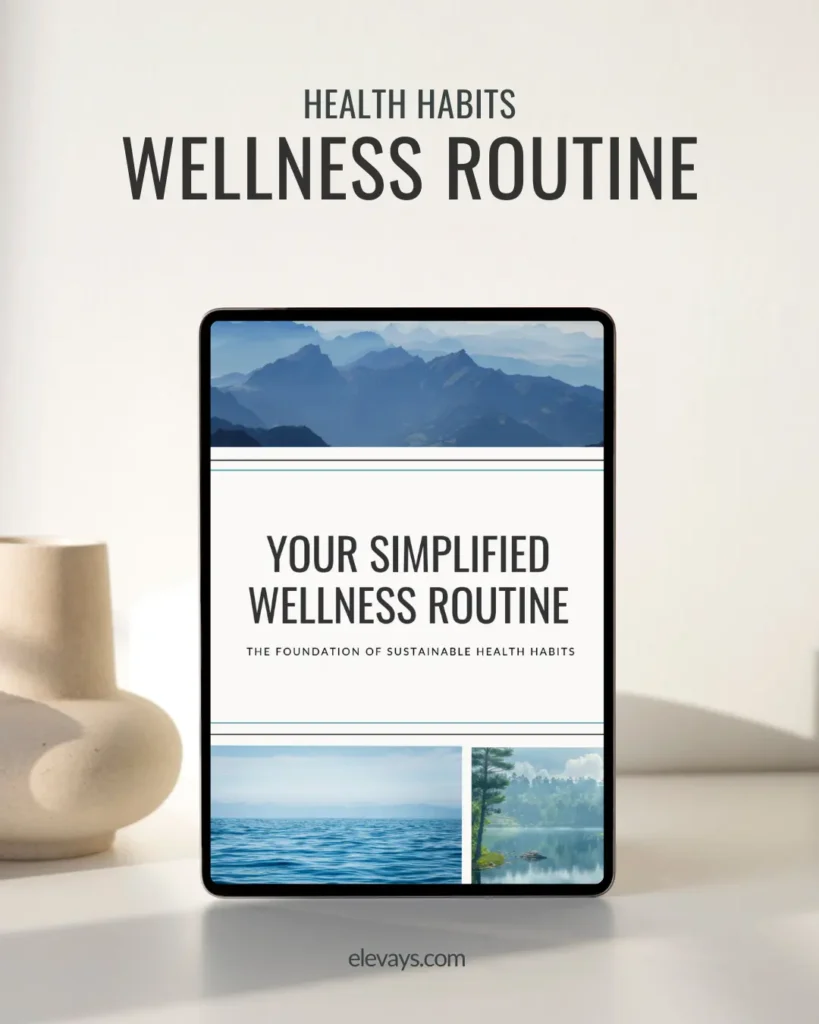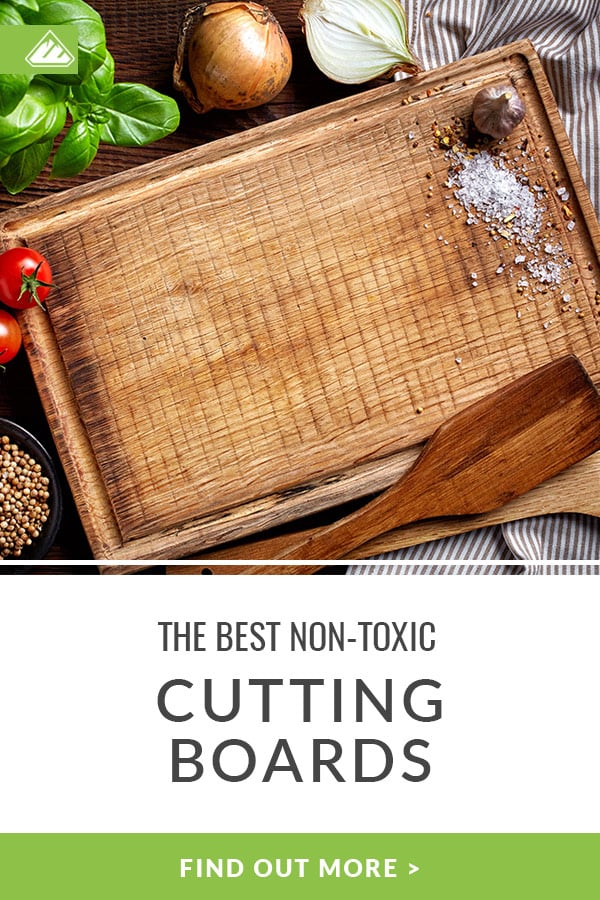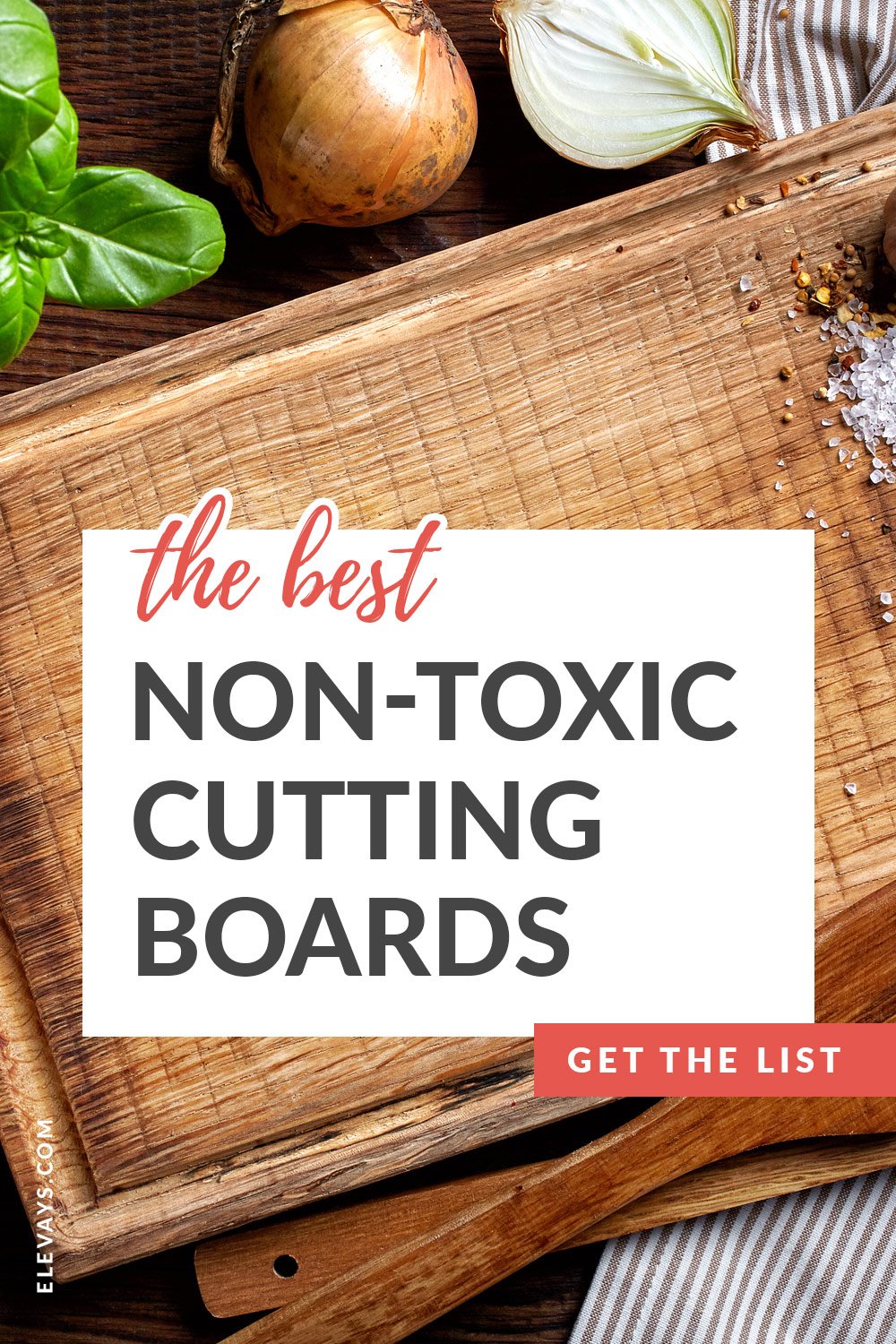We want to raise our kids in a non-toxic home, but did you know toxins are hiding in seemingly innocent kitchen products like cutting boards and utensils? Shocking, right? But with a few new kitchen products, like non-toxic cutting boards, you can create a safe and healthy environment with ease.
I know what you’re thinking, “what are the most popular cutting board and utensils?” There are so many products on the market to choose from, and finding the best options requires hours of research. It’s a crucial issue, considering everyone uses cutting boards to prepare food at home each day.
We’ll go over why bamboo and wood cutting boards are becoming more popular and why you need to ditch your plastic cutting board immediately. Keep reading to learn about the harmful toxins in traditional cutting boards and find my picks for the top 5 best cutting boards on the market today.
TRUTH BOMB:
You’re
Already killing it!
If You Were More Consistent With Your Wellness Routine, You’d Be Unstoppable.
What Cutting Boards are Non-Toxic?
Before you can find the best non-toxic cutting board for you, you need to know what materials are ideal. Cutting boards from the past were commonly made of wood because it’s easy to clean and safer for cooking. However, people started using plastic for a budget-friendly alternative without knowing the consequences.
Avoid the following materials in cutting boards:
- Plastic
- Glass
- Ceramic
You should also look out for harmful glues and finishes- this includes the ones on wood as well.
Non-toxic finishes, or the type you could eat off, include organic finishes like:
- Walnut oil
- Beeswax
- Coconut oil
- Linseed oil
- Carnauba wax
Opt for antimicrobial cutting boards made from:
- Hardwoods like maple, walnut, oak, or cherry
- Bamboo
These cutting boards are ideal because they won’t absorb juices. They’re also perfect for the broadest range of foods, from cheese and bread to meat and veggies. They also tend to be more durable. Your knives won’t damage the board, and they won’t damage the blade.
Glass boards are only ideal for baking tasks like kneading dough or making pie crust, as they dull knives. Stone and ceramic cutting boards are equally problematic.
Main Benefits of Non-Toxic Cutting Boards
There seems to be more and more research every day about the harmful effects of plastics on the human body. Chemicals like phthalates, BPA, BPS, and more are known endocrine disruptors and can lead to hormonal issues, obesity, diabetes, infertility, and more.
No Cross-Contamination
Anything you use to cook, anything that comes into contact with your food, can transfer contaminants or foodborne illnesses. Cutting boards are no different. You can’t use the same cutting board to chop up both meat and vegetables, or you risk cross-contamination, and the materials your cutting board is made from can transfer toxins in the same way.
With a non-toxic cutting board, no harmful ingredients can transfer to your food – from toxins to bacteria.
Toxin Free
One of the main benefits of non-toxic cutting boards is that they don’t contain harmful toxins.
Plastic may be more affordable, but it’s also full of harmful toxins. For example, the material is treated with a chemical called triclosan. This ingredient is commonly added to products to prevent bacterial contamination, but triclosan won’t make them safer (3). Certain types of plastic, like codes 3 and 7, should also be avoided at all costs.
Some manufacturers may use toxic glue or finishes, which are most common in wood cutting boards that were sealed together from multiple pieces and products that claim to control odor or bacteria. The adhesives are typically toxic unless the brand claims they’re toxin-free or FDA-approved, but there’s no way to know for sure. It’s safer to stick with solid wood, or better yet, bamboo, which grows without the use of chemical fertilizers or pesticides.
Bacteria
In the early 1990s, Dean Cliver, a UC Davis researcher, investigated the safety of plastic cutting boards (1). His findings determined plastic is simpler to sanitize, but bacteria can hide in the grooves your knife makes in the material. Wood, on the other hand, doesn’t scratch as much.
Cliver conducted another study at the University of Wisconsin soon after, where they tested for the bacteria that cause food poisoning on cutting boards. Wooden cutting boards outperformed plastic versions in all tests because it binds water and contains antimicrobial compounds to keep bacteria from growing (2). Bamboo has similar properties. Plastic is more likely to harbor dangerous bacteria and cause diseases like Salmonella.
Long-Term Health Benefits
Because non-toxic cutting boards don’t contain harmful chemicals, they’re less likely to cause a wide range of ailments. The chemicals in plastic cutting boards cause both short and long-term harm to people, such as:
- Cancer
- Obesity
- Allergies
- Asthma
- Liver damage
- Congenital disabilities
- Chromosome damage
- Developmental abnormalities
- Thyroid disruption
- Endocrine disruption
- Immune system damage
- Sensory organ damage
How to Choose a Non-Toxic Cutting Board For Your Needs
To choose the best non-toxic cutting boards for your needs, start by narrowing down materials. I already mentioned how hardwood or organic bamboo cutting boards are ideal, but deciding which element you prefer may depend on how you cook and your preferences.
For example, bamboo is beautiful, sustainable, and widely available. Bamboo cutting boards are budget-friendly, easy-to-clean, and the material is entirely antibacterial. It’s a safer material if toxins are your primary concern, mainly if the board uses glue to combine multiple pieces of wood.
Hardwoods are equally attractive, but they come in more patterns and color options. They’re also easier on your knives if you tend to cut meat or vegetables the most. Hardwood is more expensive, but it also lasts longer as well.
For many people, the decision comes down to maintenance. While both materials require regular care and upkeep, bamboo requires more maintenance than hardwoods.
The 5 Best Cutting Boards for a Non-Toxic Home
I’ll show you my favorites in both wood and bamboo cutting boards so that you can choose the best model for your needs.
The 2 Best Wood Cutting Boards
Dense, hardwoods are perfect for wood cutting boards. They’re also often treated with mineral oil, which is a non-toxic finish for cutting boards made from petroleum. It’s low in toxicity, though (4). You can also look for an FSC-certified hardwood material for a completely non-toxic finish.
The two best companies who make non-toxic wood cutting boards include:
1. Urthware Solid Wood Cutting Boards
Handmade by Michael Gal, these solid wood cutting boards are made with care. The product screams thoughtful, with features like rubber feet to keep the cutting board from sliding across the countertop or the indentations intended as handgrips on either side. These small details are helpful when you’re cooking, and there are various options to choose from.
Maple is an excellent choice because the closed grain is less likely to be contaminated with bacteria or scratch. It’s not only a durable material, but it’s also entirely non-toxic. The wood is finished using an organic, homemade blend of walnut oil and beeswax. The maple is also an inch thick for durability.
However, you’ll want to continue using Urthware’s finish for maintenance.
2. John Boos Chop-N-Slice Maple Block
Made in Illinois by a team of skilled craftsmen, John Boos maple cutting board is a block-style perfect for meat and cheeses. The maple wood is highly durable and reversible. It doesn’t offer raised feet like Urthware, but it does come with quality materials. They’re lightweight, easy on knives, and won’t harbor bacteria. Plus, you can buy options on Amazon and still receive a year-long warranty.
The company makes a range of excellent cutting boards from 100% wood, and they come in different sizes for all your needs. Expect to perform regular maintenance on this wood board as well to keep the finish fresh.
The 3 Best Bamboo Cutting Boards
Bamboo is a low-maintenance material that’s excellent for health, sanitation, and safety. Unlike dense woods, you don’t have to rub a finishing oil or beeswax to keep the cutting board from warping. They’re nearly maintenance-free and much more affordable. However, don’t put bamboo cutting boards in the dishwasher and you always want to dry completely after hand washing. For the best results, you’ll also want to ensure the bamboo is grown organically as well.
The following three best bamboo cutting boards are affordable options on the market today:
1. Neet Organic Bamboo Butcher Cutting Block
Neet is a loving company that cares about kitchenware with a soul. This super large bamboo cutting board is organic and heavy-duty. It’s a handcrafted butcher block style that’s made with natural and organic Moso bamboo. You can use it to cut up meats and veggies or serve cheese platters. Plus, this cutting block has excellent handcrafted features like hand grooves for safety and a reversible top for multiple functions. The thick wood weighs nearly nine lbs., and it isn’t easily damaged.
Plus, the material is naturally finished so that it won’t absorb nasty odors or leak toxins into your food. If you’re not happy for any reason, there’s even a money-back guarantee.
2. SimPrium Premium Bamboo Cutting Board
A premium bamboo cutting board, SimPrium is special. It’s a practical design with grooves for food juices to collect, which allows you to drain quickly. The bamboo is thick and durable, and it’s FDA-approved, eco-friendly Moso bamboo. You can clean the board in a snap, and use it for everything from veggies and bread to meat. It’s even cute enough to use as a cheese serving tray.
Unlike other bamboo cutting boards on the market, this option comes with a plastic tray for easy waste removal during food prep. The surface area is entirely antimicrobial, and although there is a small amount of plastic in the model, it doesn’t touch the food you eat. The waste tray slides out, and it’s BPA-free – which means the plastic is free of chemicals linked to health problems and infertility (5).
3. Bamboo Works Professional Wood Cutting Board and Cheese Board
Bamboo Works is highly rated in bamboo cutting boards and utensils. The company uses the best bamboo sources, and the beautiful tiger stripe finish is a stunning kitchen accent. This cutting board is made with organic Moso bamboo, a durable and robust strand. It contains no fillers or stains, creating an entirely safe and natural antimicrobial cutting board. There are no toxins, plastic pieces, or glued sections to worry you.
Plus, if you’re still not sure this is the right bamboo cutting board for you, it comes with a 100% money-back guarantee. Bamboo Works will withstand daily, heavy use.
Where to Buy Non-Toxic Cutting Boards
You can buy non-toxic cutting boards from any home goods store or holistic store. You can find handmade craftmanship in natural cutting board options on Etsy, or shop around online to find an eco-friendly company near you.
Make sure you also buy enough cutting boards for your needs. A set is ideal because you can use one for meat and another for vegetables to further avoid cross-contamination.
A Safer Alternative: Antimicrobial Cutting Boards
Rather than buy plastic or ceramic cutting boards, look for an antimicrobial cutting board. They’re better than even wood products because they are entirely free of chemicals, stains, or glues. Real bamboo boards are naturally antimicrobial, making them the safest choice. Go with bamboo if you don’t want to search every ingredient listed in a cutting board before you buy.
We also have non-toxic wooden spoons and spatulas in our store you can use to create a completely non-toxic kitchen. While you’re ditching the harmful plastic cutting boards, check out what other common kitchen toxins you should avoid for optimal kitchen safety.
Sources:
- Cliver, Dean, O. (1992). Plastic and Wooden Cutting Boards. Retrieved from: https://news.ncsu.edu/2014/09/cutting-boards-food-safety/; http://www.roundbarnwoodcrafts.com/pdf/PLASTIC%20AND%20WOODEN%20CUTTING%20BOARDS.pdf
- Cliver, Dean, O., Nese O. AK., and Charles W. Kaspar. (1993). Cutting Boards of Plastic and Wood Contaminated Experimentally with Bacteria. Retrieved from: http://www.treenshop.com/Treenshop/ArticlesPages/SafetyOfCuttingBoards_Article/CliverArticle.pdf
- FDA. (2019). 5 Things to Know About Triclosan. Retrieved from: https://www.fda.gov/consumers/consumer-updates/5-things-know-about-triclosan
- Environmental Working Group. (2019). Mineral Oil. Retrieved from: http://www.ewg.org/skindeep/ingredient/703977/MINERAL_OIL/
- Machtinger, R. (2013). Bisphenol-A and human oocyte maturation in vitro. Retrieved from: https://www.ncbi.nlm.nih.gov/pubmed/23904465







READ the Latest
Health Habits
Health Habits
Longevity
Longevity
4 Comments